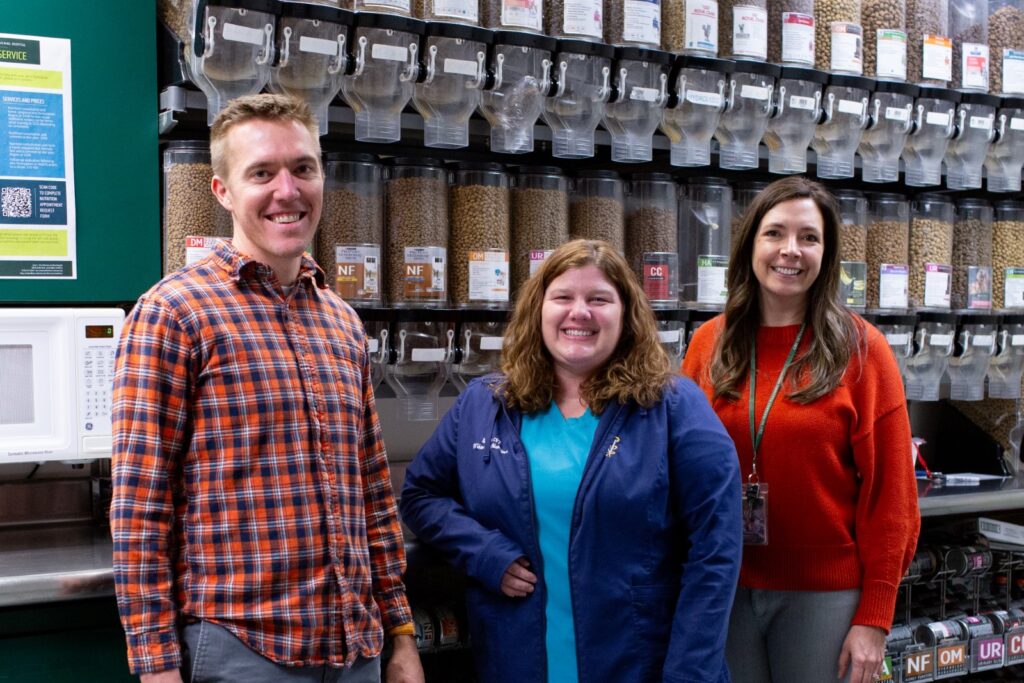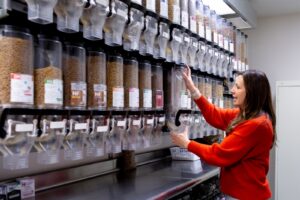
Torres-Henderson started at the VTH as faculty in Community Practice. It was there she started to explore the connection between nutrition with obesity management and ultimately disease prevention. This prompted her pursuit of a nutrition residency, even though it meant creating the program.
“It just sparked this interest in the metabolic pathways and the more I was reading and learning about it, the more I was like, this is stuff I’ve just never even heard of. I’d been a vet for many years at that point and I was like, oh, this is a cool way to think about different conditions,” Torres-Henderson said.
Torres-Henderson, who is now the head of the nutrition service, explained that it started small, and when she looks back, she wonders how clients even found them. “It was just us and our email doing nutrition consults,” she said.

Nutrition is still pretty small in numbers, but their reach has expanded. Torres-Henderson works with resident Dr. Kyle German and Registered Veterinary Technician Meghan Schmidt in a small office.
Today, every corner but the doorway has a desk that’s in full use. Schmidt is combing through new client history, and Torres-Henderson and German host virtual consults and build diet and recipe plans.
Their clients find them through referring veterinarians and hospitals, the American College of Veterinary Nutrition, and our Veterinary Teaching Hospitals’ Internal Medicine service–which provides another layer of care resources for our patients.
The Nutrition service played a behind-the-scenes role in helping a Mastiff named Abigail, achieve a healthy weight and regain mobility along with the Intensive Care Unit, Critical Care Unit, and Orthopedic Medicine team. Nutrition created a restricted diet plan with added protein, vitamins, and minerals for Abigail. Through the full rehabilitation process, the care teams saw her go from 114 kilograms (251 lbs.) to 66.4 kilograms (146 lbs.).
In addition to obesity management, conditions that nutrition frequently consults are gastrointestinal disease, renal disease, and pancreatitis. They also see clients who are interested in creating home-prepared meals for their companion animals, which can be tricky to get right.
“Knowing that we are a resource, vets can send them to us to make sure everything’s going well. Because most of the time, if they’re just trying to do it on their own, they’re going to be missing something that their patient needs,” German said.
Torres-Henderson explained that she sees the Nutrition service as a partner for both the hospital and patients. She hopes to be a resource for clients to ask questions and where General Practice knows someone can devote an hour to understand and explore options for their patients.
“I describe it sometimes as another lens,” Torres-Henderson said. “Everything we’re thinking about is how could this trace back to a metabolic pathway or how could I modify that with diet.”
Veterinary Health System
Colorado State University’s Veterinary Health System is a community of veterinary professionals dedicated to providing exceptional service with passion and purpose. Our experts are animal and public health leaders working together to apply their diverse skills in veterinary care, diagnostics, and education. As a partner of CSU’s top-ranked academic veterinary program, the clinical team works with researchers and educators to advance the future of veterinary medicine.